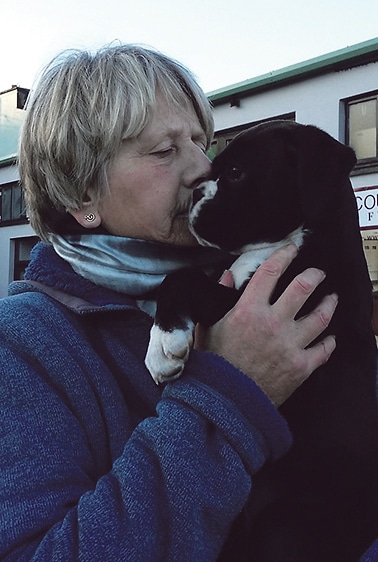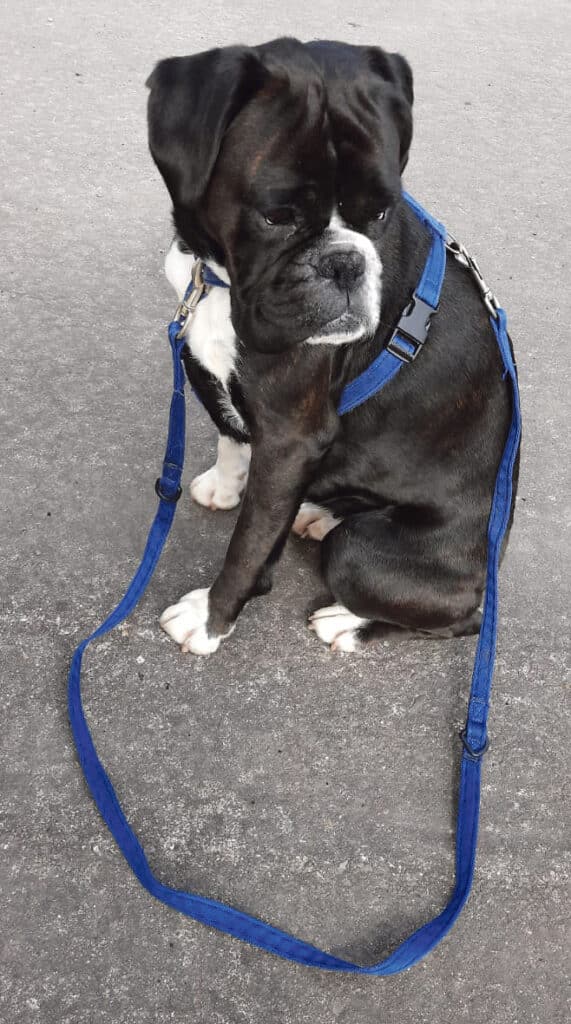
Liz Mahony is an experienced Dog Trainer and Holistic Therapist for all animals. In her monthly column, Liz aims to promote mutual respect between carer and dog. Contact Liz at
corkdogtrainingclasses.com
The other day I was on a particular Facebook page about dogs. Someone had a new puppy and wanted to know how to get him to walk quietly on the lead. One guy replied that the first few times he put his dog on lead he held it so tightly near his leg and walked his puppy until he got used to not pulling! I suspect the only lesson he taught his pet in that moment was that his own strength and force was superior!
I believe that if you ask your dog to ‘Sit’, ‘Stay’ ‘Walk on’ you want him to perform those commands by choice rather than through fear or force. That’s why we use rewards to positively reinforce what we want.
I suggested in last week’s article that you practice getting your dog to focus at home before you venture outside for a walk. You see, when you take your dog for a walk, it’s so stimulating for him. Did you know that when your dog sniffs a lamp post where another dog has peed, he can tell the breed, sex, and height of that other dog just from his ‘calling card’? Your dog also knows in which direction the dog was going and if he’s a ‘regular’ or new to the neighbourhood. That’s heady stuff. So then your dog leaves his ‘calling card’ for any passing canine! No wonder dogs have a difficulty listening to us when outside. But, it’s so important to allow your dog to ‘read’ this information.
First and foremost, I believe it’s important to hold the lead in both hands. I described how to use both connections of a double-ended lead attached to a harness last month. But, if you are using just one attachment, then it’s important that your lead is attached to a ring on the front of your dog’s chest. If you connect it to the one on his back, you have no control and end up ‘wind-surfing’ behind your dog. Not only that, he’s not in balance because he can still lean and pull.

If you attach the lead to the front of the harness, you can move or turn his whole body. Let’s say you are walking your dog on your right, then you slip your left hand through the handle of the leash. You consciously keep your right hand loose around the lead and you can move it up or down as you see fit. If you need him to come closer to you, your right hand moves down the lead, and up the lead if you are giving him more freedom. Another advantage is that you can keep him on your right or left hand side. Also, loosening your firm, static grip on the lead lessens the tension in your own body.
There are definitely times when you need your dog to walk closely beside you in order to safely pass people, obstacles and so on. You can teach him to do this by holding a treat in the hand nearest to him and near your leg. Get him to focus on the treat as you walk a few steps. If he manages this, then say, ‘Good’ and reward with the treat as you keep walking. Once he has the hang of what you want, then add the cue such as ‘Heel’. (Again, it’s a really good idea to practice in the quiet of your own home before you try it out on a walk.) When your dog has passed the obstacle, then let him ‘Walk on’ or ‘Go free’ on a longer lead.
Keep your mobile in your pocket! You can’t concentrate on your dog if you’re texting or reading messages. You also miss the signals your dog will give you if he’s excited, aroused, or fearful of something approaching. If you’ve picked up the signals early on by paying attention to them, then you can take action such as crossing the road, or giving your dog plenty of space.
Another useful tip to practice when your dog is excited is to change his focus. Have a pocketful of longer, high-value treats. He sees another dog approaching and begins to pull, bark or whatever. Stand still and put yourself in between. Try offering him one of those treats but keep hold of the other end between your finger and thumb. Encourage your dog to nibble at the other end. It’s almost like offering him a soother so he keeps sucking at it while possibly glancing at the oncoming dog or person. If he manages to stay calm, then he deserves a Jackpot!
If you’re really committed to teaching your dog how to walk on a lead then I recommend this book: My Dog Pulls. What Do I Do? by Turid Rugaas.
corkdogtrainingclasses.com


